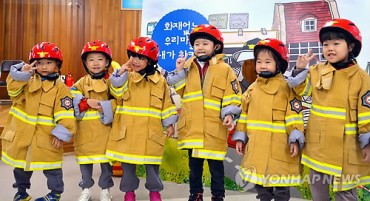
The number of international students who move to Korea mid-way through primary or secondary education from their native countries is increasing by 14 percent annually. (image: KobizMedia/ Korea Bizwire)
SEOUL, July 14 (Korea Bizwire) – A recent study has revealed that three out of ten international school-aged children (primary & secondary) residing in Korea struggle to receive the full benefits of the Korean public education system. Some of these children even give up on schooling and turn to labor instead.
According to the Ansan Migrant Children & Youth Center (AMCYC), there were 28,000 international school-aged children residing in Korea as of 2015, 14,000 of who were enrolled in local schools. However, among the remaining 14,000, an estimated 10,000 either gave up on or failed to partake in Korean public education.
The center pointed to two major causes for the phenomenon: adolescent and familial issues, and systematic and environmental reasons.
The adolescent and familial issues often encompass language barriers, which result in communication failures and learning dificulties at public schools. These students will often feel isolated and lethargic, and some end up quitting school.
Their unstable status of sojourn in Korea, and expectations on the part of parents that children bring in income were also among the reasons.
In terms of systematic and environmental reasons, the government’s passive educational administration played the biggest role.
“Korea’s educational authorities tend not to engage as actively when foreign children either don’t go to school or their parents don’t let them go,” said Kang Eun-e, director of the AMCYC. “Their justification is that they’re not legally obliged to do so.”
This is also the same reason why the center can only estimate the number of children that are left out from Korean public education. While the Ministry of Justice refuse to provide a list of school-aged children residing in Korea for privacy reasons, the Ministry of Education is only concerned with the number of students that are currently enrolled in Korean schools.
The number of international students who move to Korea mid-way through primary or secondary education from their native countries is increasing by 14 percent annually. And the AMCYC points out that there’s an urgent need for authorities to more accurately grasp the situation.
“We need to set up special classes at Korean schools to help foreigners better adapt to our educational system, and establish more institutions dedicated to children who fail to adapt, ” said Kang. “We’re living in a time of multiculturalism, and we need policies that can help these neglected children to receive the education they deserve.”
By Lina Jang (linajang@koreabizwire.com)






